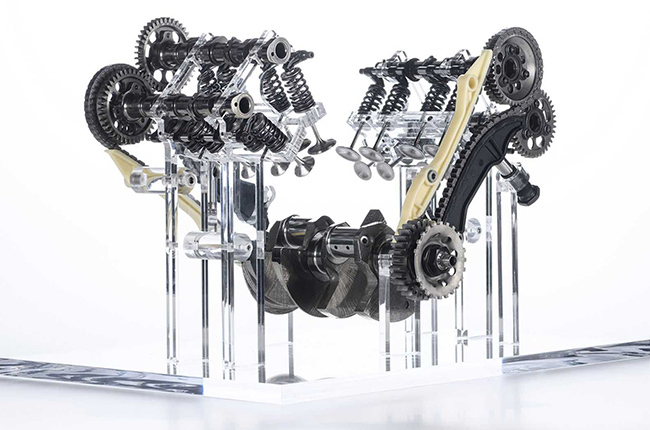Ducati foregoes the Desmo for the 2021 Multistrada V4 engine
Hence, the longer service intervals.

In the past several weeks, Ducati has been giving us little hints about its new V4 engine that would be used for the 2021 Multistrada V4. Yet, the biggest revelation about Ducati’s brand new engine is a deviation from a technology that they’ve been using for decades now. Ducati has decided to lose its famous Desmodromic valve actuation system which is what allows the new V4 engine for longer service intervals. To say the least, a tedious full-Desmo service would no longer be needed, insofar as the Multistrada V4 is concerned.

We already know that it’s a brand new engine tuned more for adventure touring that wasn’t just lifted off of its Panigale, or Streetfighter V4. Because of this, the Italian motorcycle manufacturer even decided to aptly give the engine its very own name, the Granturismo.

Ducati has been using its famous Desmodromic valve actuation system for most of its motorcycle engines since the 1960s. The system holds a number of advantages when compared to the conventional valve spring actuation that most engines use, especially in high-performance machines. Desmodromic valves don’t rely on springs to allow the flow of gas into the engine. Instead, the valves use two cams and two actuators with each of them allowing for positive opening and closing without using a return spring. As a result, the engine gets the ability to withstand a higher RPM than a conventionally operated valve-train resulting in better engine performance.
To achieve this with conventional engines, heavier springs would need to be used to get the same effect. However, this also causes some negative effects including cam drag and more wear on the engine’s internal components.

That being said, Ducati still decided that the Granturismo engine’s four valves per cylinder would be actuated by conventional valve springs in effect, doubling the service intervals over the outgoing Multistrada 1260 V-twin engine. The was of the engine’s development was to give it more longevity rather than outright performance. Yet despite the decision, they still managed to reduce its weight, dimensions, and still an overall technologically advanced V4 engine. That’s still a feat that only the best engineers from the house of Borgo, Panigale can deliver. We’ll still be looking forward to the official unveiling of the Ducati Multistrada V4 next month.
Tagged Under
Related Articles
-
Ducati marked its highest-sales record in 2021—the best in the brand’s history / News
This achievement marks the very first time the brand has ever hit 59,477 units sold.
-
Ducati dedicates an entire pop-up store to the Multistrada V4 in France / News
Just one model is showcased in the pop-up, and it also highlights the men and women with a passion for riding.
-
The new Ducati Multistrada V4 Pikes Peak gives us another level of extreme / News
The Multistrada V4 gets Desmosedici GP-inspired livery, an advanced Öhlins suspension, and a 17-inch front wheel.
-
The Ducati Multistrada V4 is now in the Philippines starting at P1.7M / News
Ducati has launched the Multistrada V4 in the Philippines at P1.7M
-
Ducati has unveiled the 2021 Ducati Multistrada V4 / News
Ducati has introduced the 2021 Ducati Multistrada V4 with a slew of updates, chief of which, an updated 1,158 cc V4 engine.
Latest News
-
Take a look at the new Honda CB1000F / News
Honda has revealed the production-spec CB1000F, blending retro style with Hornet-based performance and modern tech. Expected to hit UK showrooms in early 2026.
-
Ducati launches all-new Hypermotard V2 with cutting-edge tech / News
The Hypermotard V2 keeps its aggressive stance and signature beak while bringing sharper design and modern electronics.
-
2026 Kawasaki Z650 S gets more aggressive styling and premium tech / News
The 2026 Kawasaki Z650 S adds new styling, updated tech, and the same dependable 649cc engine loved by middleweight riders worldwide.








